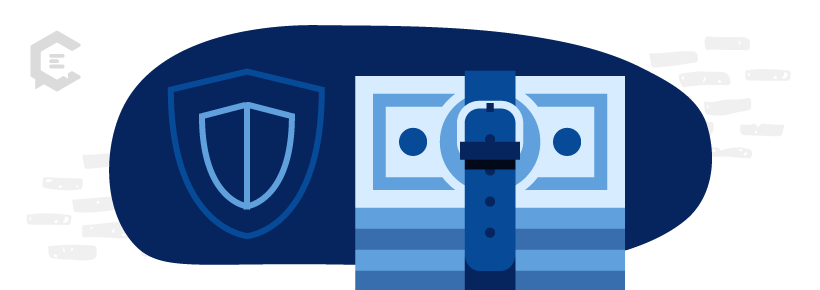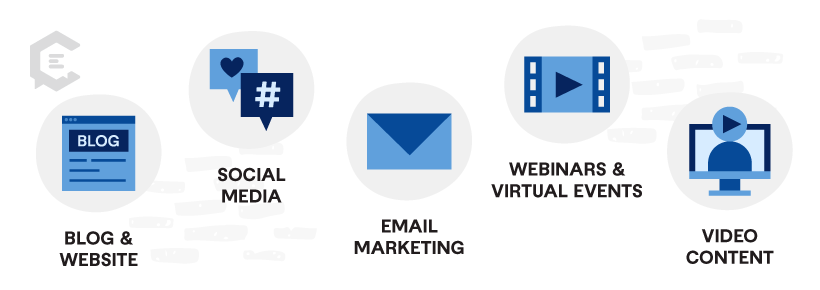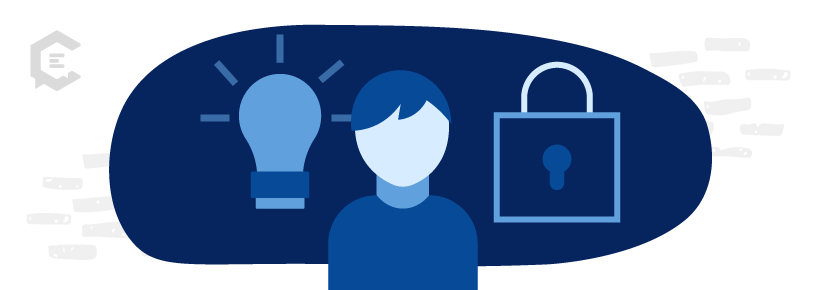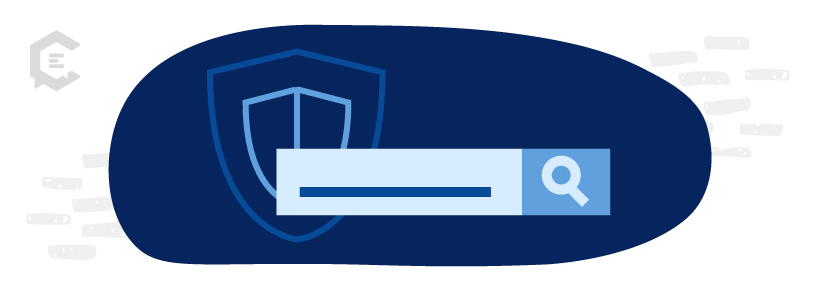For cybercriminals, pretty much anyone is fair game these days. It doesn’t matter if you’re the average user, a small business, a nonprofit, or a big-name corporation. Without sufficient know-how and the right security measures in place, you’re leaving your devices and information vulnerable.
To stay safe online, users must know how to protect themselves and their systems. This creates an opportunity for cybersecurity companies to educate their audiences through helpful, informative content — and increase adoption rates for their solutions while they’re at it.
This article will discuss the content marketing challenges unique to cybersecurity companies and some tried-and-tested content strategies for increasing cybersecurity awareness and adoption.
Unique content marketing challenges for cybersecurity SMEs
Creating and distributing timely and engaging content consistently is key to success in content marketing. Rather than directly promoting a product or service, the goal is to inform, educate, entertain, and solve pain points for the audience. This builds trust and credibility. Prospective customers develop a positive perception of your brand, making them more receptive to your offerings.
But small and medium-sized enterprises (SMEs) operating in cybersecurity face unique content marketing challenges. These include:
Limited budget and resources
Cybersecurity SMEs have tighter budgets and limited marketing resources compared to their larger, more established counterparts. This hampers their ability to consistently create and distribute high-quality content.
Creating informative, engaging technical content
Cybersecurity is a complex, technical field. SMEs may struggle to produce accurate, informative content that’s also accessible to a non-technical audience.
Establishing trust and authority
Cybersecurity SMEs may have to double their efforts to gain customers’ trust who prefer bigger, more established providers.
Standing out in a competitive industry
The cybersecurity industry is highly competitive. Smaller providers must tap into their unique strengths and value propositions to stand out.
Staying on top of rapidly changing trends
Cybersecurity is constantly evolving. To produce timely, relevant content, SMEs must stay current with the latest trends, technologies, and threats.
Content marketing strategies for small and medium-sized enterprises in cybersecurity
To take advantage of the many benefits of content marketing, here are some core content strategies for cybersecurity businesses:
Create relevant and engaging content
Impactful content speaks directly to your audience. It addresses their specific challenges and pain points.
For example, individual users may need information on spotting a phishing attack or creating a strong password. Business customers may require bottom-of-the-funnel (BOFU) content to help them make purchase decisions, such as comparing the best threat detection and response (TDR) tools on the market.
To produce content that’s engaging and relevant:
- Understand your audience: Determine your audience’s problems, goals, and motivations. Know the types of content that resonate with them. Use tools like interviews and surveys. Analyze customer data. Monitor industry trends.
- Act as a thought leader: When you consistently publish educational, informative content, you’re not only helping your audience navigate the complicated world of cybersecurity. You’re also showcasing your expertise and authority in the space.
- Don’t stop at blog posts: Develop easy-to-understand tutorials, explainer videos, and how-to guides that make complex cybersecurity topics more relatable. Share expert insights, industry analyses, and research findings. Incorporate visuals like charts, animations, infographics, and interactive tools to make your content more appealing and shareable.
- Using storytelling in cybersecurity content marketing: Storytelling can captivate an audience, evoke emotions, and make abstract concepts more tangible. In cybersecurity content marketing, storytelling can take the following forms: case studies and success stories, security breach narratives, and stories that showcase the human side of cybersecurity.
Use the right content marketing channels
Different channels have different levels of effectiveness, depending on the content type and the audience’s preferences. Identify your audience’s preferred channels and tailor the content for maximum impact and engagement.
Some of the most common content marketing channels include:
- Blog and website: Your website’s blog section can host various types of content, including educational cybersecurity content, solution-focused articles, and written or video-based expert insights.
- Social media: Use social media platforms like LinkedIn and Facebook to share content, engage with your audience, and build a community. Understand the audience types frequenting these platforms, and create content around their preferences. LinkedIn, for example, is popular among cybersecurity professionals. Expert insights on the current security landscape and what the future holds for cybersecurity are topics they’ll likely want to learn more about.
- Email marketing: With email marketing, you can directly send personalized content to your subscribers’ inboxes. Use this channel for promotions, exclusive content, and market updates.
- Webinars and virtual events: Webinars and other online events (conferences, summits, workshops, etc.) let you showcase your company’s expertise, discuss specific cybersecurity topics, and interact with your audience.
- Video content: Use explainer videos, demos, and vlogs to create engaging video content that appeals to a bigger audience.
Maximize each channel by creating content that suits the audience and platform. For example, visually appealing content works best on social media, while blogs and webinars are best for comprehensive guides.
The tone and language of your content should match the technical proficiency level of each channel’s audience. Cybersecurity professionals will likely have no trouble understanding industry jargon, while average users and non-technical decision-makers will expect more relatable language.
Establish thought leadership in cybersecurity
Thought leadership positions your cybersecurity SME as an influential and authoritative voice in the industry. This solidifies your credibility, builds your competitive advantage, attracts potential customers to your brand, and cultivates customer loyalty.
Strategies for establishing thought leadership:
- Produce high-quality content: Consistently publish helpful, insightful content that addresses industry challenges, emerging trends, and best practices. Content types can include blog posts, white papers, ebooks, case studies, and research reports.
- Participate in industry events: Speak at conferences, forums, or webinars. Share your insights and expertise with a wider audience.
- Engage on social media: Participate in cybersecurity discussions on social media. Share relevant content, respond to questions, and comment on industry news.
- Contribute to industry publications: Seek opportunities to write for popular cybersecurity publications. This expands your content’s reach.
- Partner with influencers: Collaborate with industry thought leaders. Co-create content. Participate in joint events.
- Offer unique insights: Share original research. Offer your unique perspectives on the industry’s problems and solutions.
- Stay current with the latest trends: Stay updated with the latest threats, trends, and technology. This can empower your company to pioneer new cybersecurity approaches and strategies, setting the standards for your peers to follow.
Leverage search engine optimization (SEO) for cybersecurity SMEs
SEO involves optimizing content for relevant cybersecurity keywords to boost your website’s search engine rankings and attract organic traffic. It’s a critical aspect of digital marketing and works hand in hand with content marketing.
SEO best practices for cybersecurity content
- Perform keyword research: Identify the keywords and topics potential customers search for. Use tools like Google Keyword Planner or Ahrefs.
- Optimize your content: Create engaging, high-quality content that incorporates your target keywords. Avoid keyword stuffing.
- Include keyword-rich title tags and meta descriptions: These can help improve your content’s click-through rate (CTR).
- Build high-quality backlinks: Acquire quality backlinks from reputable cybersecurity websites through guest posting or influencer collaborations.
- Use internal linking: Link to related content to help users find pages within your website better.
- Regularly update your content: Keep content fresh and up-to-date. This signals to the search engines that you take the time to provide useful, accurate, and timely information.
- Use HTTPS: Hypertext Transfer Protocol Secure (HTTPS) not only secures information exchanged between a browser and the server — it’s also a Google ranking factor.
Take advantage of the benefits of cybersecurity content marketing
When done right, cybersecurity SMEs stand to reap the many benefits of content marketing. Engaging, informative content produced consistently can position your brand as an industry leader. This magnifies your company’s credibility. Ultimately, customers only do business with brands they trust.
Connect with ClearVoice today for a free strategy session and access to our vetted pool of technology and cybersecurity writers.







